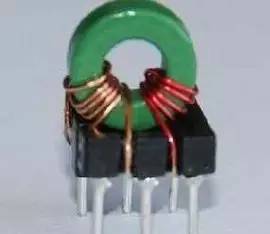Inductor coils are divided into three types, turbulence, filtering, and oscillation.
First, turbulence: used in low-frequency circuits to block low-frequency alternating current; pulsating direct current to pure DC circuits; it is commonly used in the middle of two filter capacitors at the output of the rectifier circuit, and the choke and capacitor form a 滤波-type filter circuit. In high-frequency circuits: high-frequency chokes in old-fashioned regenerative radios that prevent high-frequency currents from flowing to the low-frequency end;

Second, the filtering: the same as the above theory; also to prevent the pulsating DC current flowing after rectification to the pure DC circuit by the choke (to simplify the circuit, reduce the cost, replace the choke with pure resistance) two capacitors (electrolytic capacitors) Filter circuit. The capacitor is charged and discharged, and the choke coil is connected to the direct current to block the alternating current characteristics to complete the smooth direct current to obtain pure direct current.
Third, shock: We say that rectification is to convert alternating current into direct current, then shock is the reverse process of turning direct current into alternating current. We call the circuit that completes this process an "oscillator." The waveform of the oscillator: positively swirling, sawtooth, trapezoidal, square, rectangular, and spike. The frequency is from a few HZ-several GHZ. In the field of cable and radio, the field of radio is very widely used.
In a circuit, when a current flows through a conductor, an electromagnetic field is generated. The magnitude of the electromagnetic field divided by the magnitude of the current is the inductance.
The definition of the inductance is L=phi/i, and the unit is Weber.
Inductance is a physical quantity that measures the ability of a coil to generate electromagnetic induction. A current is applied to a coil, and a magnetic field is generated around the coil, and the coil has a magnetic flux. The larger the power supply to the coil, the stronger the magnetic field and the greater the magnetic flux through the coil. Experiments have shown that the magnetic flux through the coil is proportional to the current flowing in, and their ratio is called the self-inductance coefficient, also called inductance. If the magnetic flux passing through the coil is represented by φ, the current is represented by I, and the inductance is represented by L, then
L= φ/I
The unit of inductance is heng (H), which is also commonly used in units of millihenry (mH) or microhenry (uH). 1H = 1000 mH, 1H = 1000000 uH.
The inductor can only act on the unstable constant current. Its characteristic voltage is proportional to the instantaneous rate of change (derivative) of the current passing through it. The proportional coefficient is its "self-inductance".
The reason why the inductor works is that it produces a changing magnetic field when passing an unstable current, which in turn affects the current, so that any conductor, as long as it passes through the unstable current, will produce The changing magnetic field will in turn affect the current, so any conductor will have a self-inductance
On the main board, you can see a lot of copper-wound coils. This coil is called an inductor. The inductor is mainly divided into a core inductor and a hollow inductor. The core inductor has a large inductance and is commonly used in a filter circuit. The hollow inductor has a small inductance and is commonly used. High frequency circuit.
The characteristics of the inductor are exactly the opposite of the characteristics of the capacitor. It has the characteristic of preventing the passage of alternating current and allowing the direct current to pass smoothly. The characteristics of the inductor are DC and resistance AC. The higher the frequency, the larger the coil impedance. Inductors often work with capacitors in the circuit to form LC filters, LC oscillators, and so on. In addition, people also use the characteristics of the inductor to manufacture the choke, transformer, relay and so on.
Type of inductor
According to the shape, the inductor can be divided into a hollow inductor (air core coil) and a solid inductor (solid coil). According to the nature of the work, the inductor can be divided into high frequency inductors (various antenna coils, oscillating coils) and low frequency inductors (various chokes, filter coils, etc.). According to the package form, the inductor can be divided into a common inductor, a color ring inductor, an epoxy inductor, a chip inductor, and the like. According to the inductance, the inductor can be divided into a fixed inductor and a tunable inductor.
The role of the inductor: through DC, blocking AC
Through DC: The so-called DC is the DC circuit, the role of the inductor is equivalent to a wire, does not have any effect.
Resisting AC: In the AC circuit, the inductor will have an impedance, that is, XL, the current of the whole circuit will become smaller, which has a certain hindrance to the AC.
Insulated Copper Tube Terminals
Insulated Copper Tube Terminals,High quality insulated terminal,copper tube terminal
Taixing Longyi Terminals Co.,Ltd. , https://www.longyicopperlugs.com
![<?echo $_SERVER['SERVER_NAME'];?>](/template/twentyseventeen/skin/images/header.jpg)